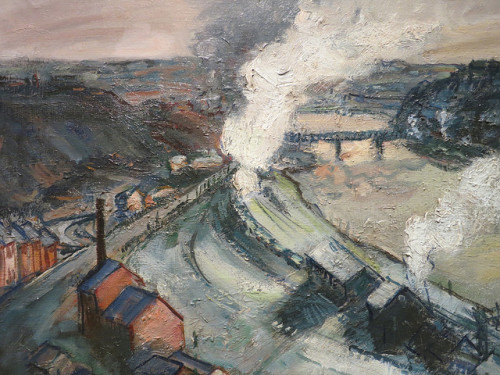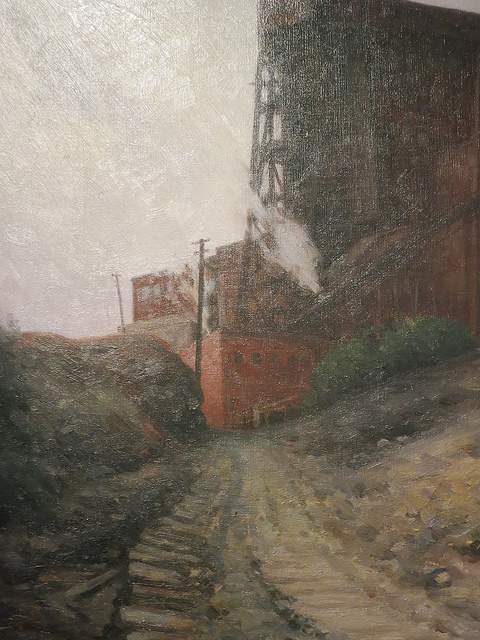Stratoz and I went to see the Iron and Coal, Petroleum and Steel: Industrial Art from the Steidle Collection Exhibit at the James Michener Art Museum(on view until October 25, 2015). I was interested to note the context of this collection, assembled by the Edward Steidle(1887-1977) Dean of the College of Earth and Mineral Sciences at Penn State. Steidle purchased and commissioned these paintings to as a way to demonstrate the various industrial processes and the critical role of the extractive industries in Pennsylvania to his students. The Industrial Art homage at the Michener is notable for the predominance of flame, with the glowing orange of molten steel. Artists were drawn like moths to a flame, and each had a style that captured the scenes of the furnaces in a different way. The blazing colors are beautiful, and yet ominous in the power to cause injury and in their intense heat.
I’d never seen a steel factory until I moved to Bethlehem, PA, from Canada in 1985. It rose up like a mountain from the South Side, and had produced steel for the Golden Gate bridge and much of the New York skyline. 1985 was at the tail end of the Steel, losing money, cutting workers. When I started college a few years later, I took a class in United States Labor History, and have been drawn to stories like the Triangle Shirtwaist Factory fire, and the poetry of Muriel Rukeyser who wrote movingly of the Hawks Nest Tunnel disaster.
We lived in Dunmore, PA in the early 1990’s. The coal mining industry left its mark with a network of tunnels beneath the town, and the threat of homes and grounds sinking. Subsidence was a new word that I learned in those years, especially when a hole opened up in a friend’s backyard in a neighboring town. I was interested to see that the Michener exhibit had a painting by a Dunmorean, John Willard Raught(1857-1931). He studied art in New York City, and returned home to paint portraits and landscapes of the area. He had an exhibit at a local club in 1915, where most of the paintings appear to be tranquil landscapes rather than the mining scenes. The Michener Museum notes that Raught felt conflicted by the coal industry which while providing jobs for those he knew, also scarred the landscape, and the forboding fears of disaster, and painted many of the anthracite breakers which he called “Black Castles.”


